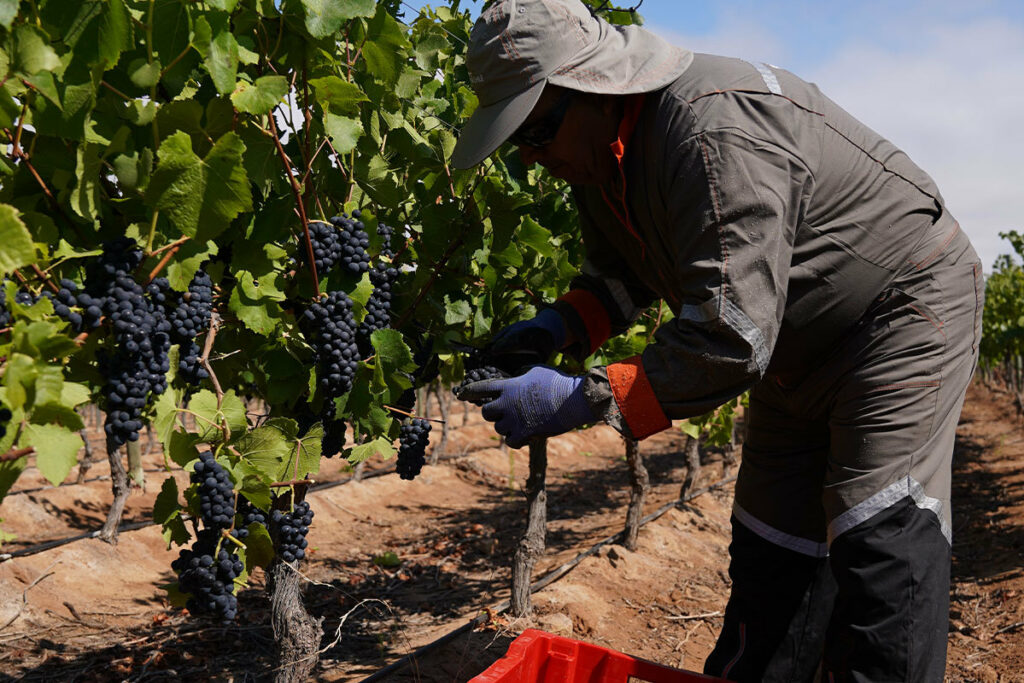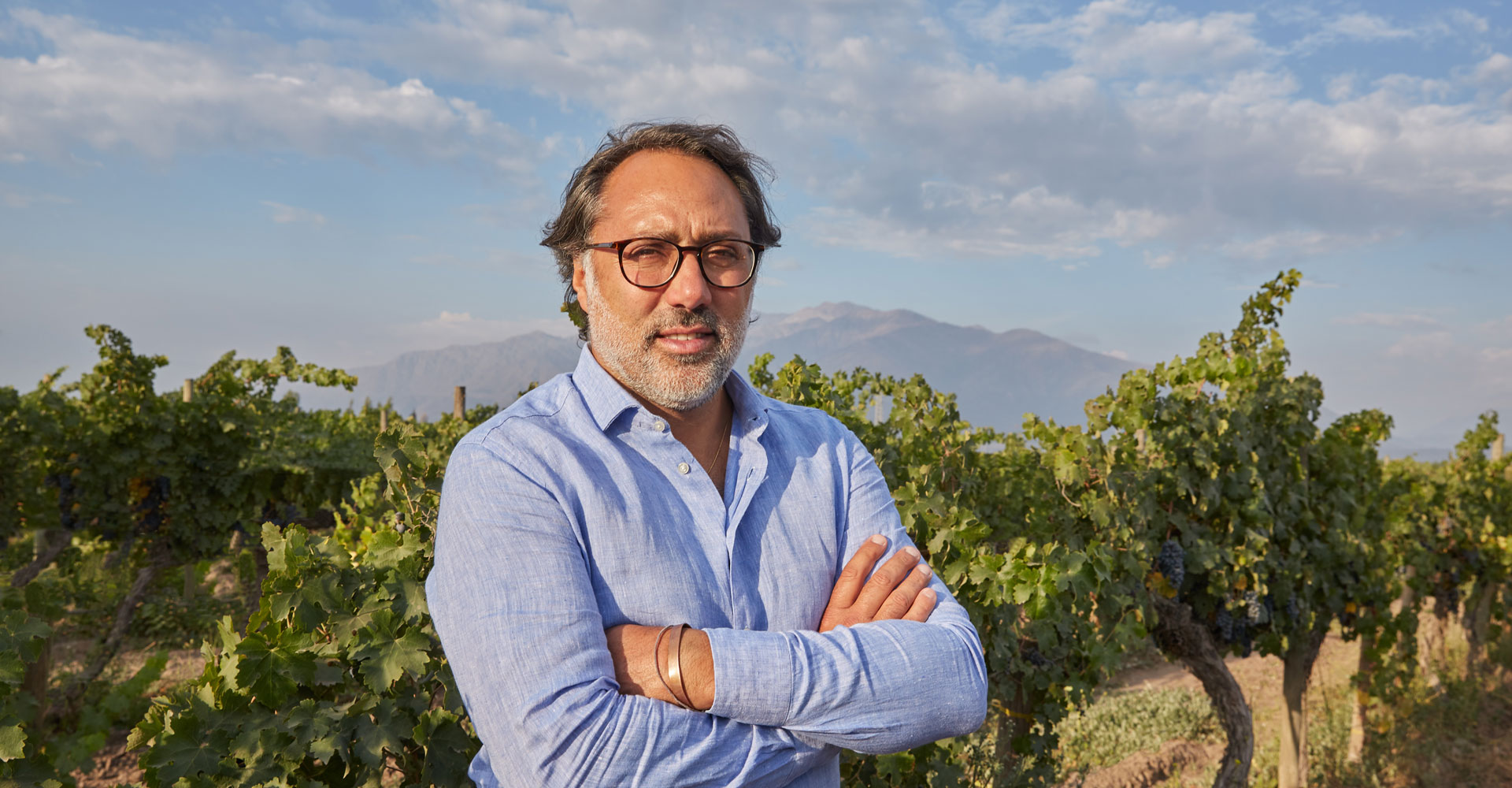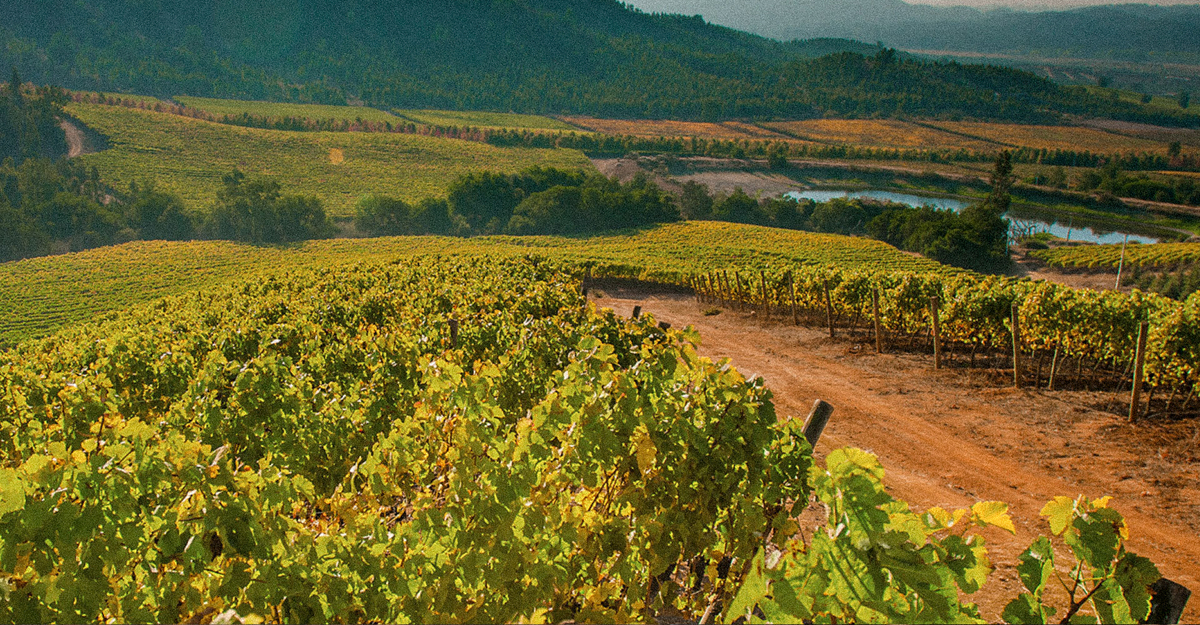The 2024 season was challenging in the valley, with higher average temperatures throughout the year and low winter rainfall. This led the agricultural and winemaking team to keep an eye on the vineyard, to probe the ripeness of the grapes early and to bring forward the harvest date by about ten days.
It is early February in the Quebrada Seca vineyard, Viña Concha y Toro’s northernmost vineyard in Chile, where the Chardonnay and Pinot Noir grapes of the renowned ultra premium Amelia line are sourced. After an intense last few weeks of visiting the vineyard, touring the different parcels and tasting the grapes to determine the precise date of harvest, the head winemaker of this wine, Marcelo Papa, and his team, agreed that the harvest of both varieties would start right away, in a harvest that is expected to last no longer than February 9.
Chile in general, and the Limarí valley in particular, are climatically conditioned by the presence or absence of El Niño and La Niña phenomena. After being influenced by La Niña between 2018 and 2023 -which determined that the sea surface temperature was slightly lower than usual and that, therefore, it rained a little less and the temperatures and thermal accumulation inside the valley were lower-, the winemaker says that at the beginning of 2023, the phenomenon began to reverse and El Niño set in. This means that the sea surface temperature rises one degree higher than usual, there is more cloudiness or condensation, higher precipitation and higher temperatures inland.
Particularly in the Limarí Valley, Marcelo explains: “as it is an area close to the coast and the Coastal Mountain Range here is very low or almost non-existent, the influence of the sea on the valley is very marked, therefore, if the sea surface temperature increases or decreases, this conditions the temperature inside the territory”.
However, during this season, and despite being influenced by El Niño at the national level, the Pacific anticyclone dropped from its usual location off the coast of Peru to the south, preventing the entry of bad weather and rain fronts. Rainfall was therefore noticeably lower in this area, in contrast to the central part of the country, where rainfall levels only increased. “The low rainfall meant that the soils were less washed, leaving them with more salts and a lower water reserve, posing major challenges in terms of irrigation,” says Concha y Toro’s Technical Director.

“To cope with this condition of low rainfall and water reserve, as well as a greater number of hours per day with temperatures above 24°C, we decided to bring forward the harvest by ten days compared to the average date of the last 5 years, and thus prevent the clusters from continuing to take light on the vine”, says the winemaker, and continues: “thanks to this action, we managed to protect the freshness of the grapes, reaching the optimum point of maturity and avoiding the development of excessive fruit notes”.
Continuing the process in the cellar
Once the grapes are harvested in the Quebrada Seca vineyard, they are transported overnight to the winery to preserve their freshness.
In the case of Chardonnay, the whole bunches, with stalks, go to the press, without first going through destemming or crushing. The juice obtained from the press is left to settle for about 12 hours, allowing the coarse material to decant, and then the juice is sent to ferment in French oak barrels. After fermentation, the wine is aged on its lees in the same barrels for a further 12 months, with 8 to 10 batonnages during the process. When the wine is ready, it is removed from the barrels, filtered and bottled.
On the Pinot Noir side, the bunches are partially destemmed and the grapes are not crushed. Depending on the vintage, a smaller or larger amount of undestemmed bunches are left in the open stainless steel tank where they will ferment. Prior to fermentation, a cold maceration is carried out for a couple of days. During the whole process, the grapes are crushed in order to achieve a delicate and precise extraction. At the end of this process, the wine is extracted and the drop wine -or first extraction wine- is sent to the barrels, where the malolactic fermentation takes place, that is, the transformation of malic acid into lactic acid, which is softer. In this way, the Pinot Noir becomes more unctuous, smooth and with rich tension. After this process, the wine is kept in the same barrels for 12 to 14 months and then bottled.

As to how these 2024 Limarí whites and reds will turn out, and although he comments that it is difficult to give a projection, Marcelo explains that “because we are harvesting the grapes a little earlier, it is expected that these wines will maintain their characteristic freshness”, and specifies: “we expect crisp Amelia Chardonnay wines, with good concentration, marked salinity and characteristic minerality. Amelia Pinot Noir, on the other hand, will have equally good concentration, slightly more restless tannins than usual because we are harvesting early, plus a good expression of fruit and mineral character. A bit savoury and savoury on the palate”.
The evening is already falling in the vineyard, the coolness of the intense sea breeze is felt and Marcelo climbs into his truck, ending another day of harvesting. “Our great challenge at Amelia is to bring all that we are perceiving; this light, the sea breeze, the coastal mist and the minerality of the soils, into each bottle. I’m sure that the effort put in by the agricultural and winemaking team throughout the season will pay off and allow us to overcome this challenging context and express the magic of this valley in these great wines”, he concludes.







